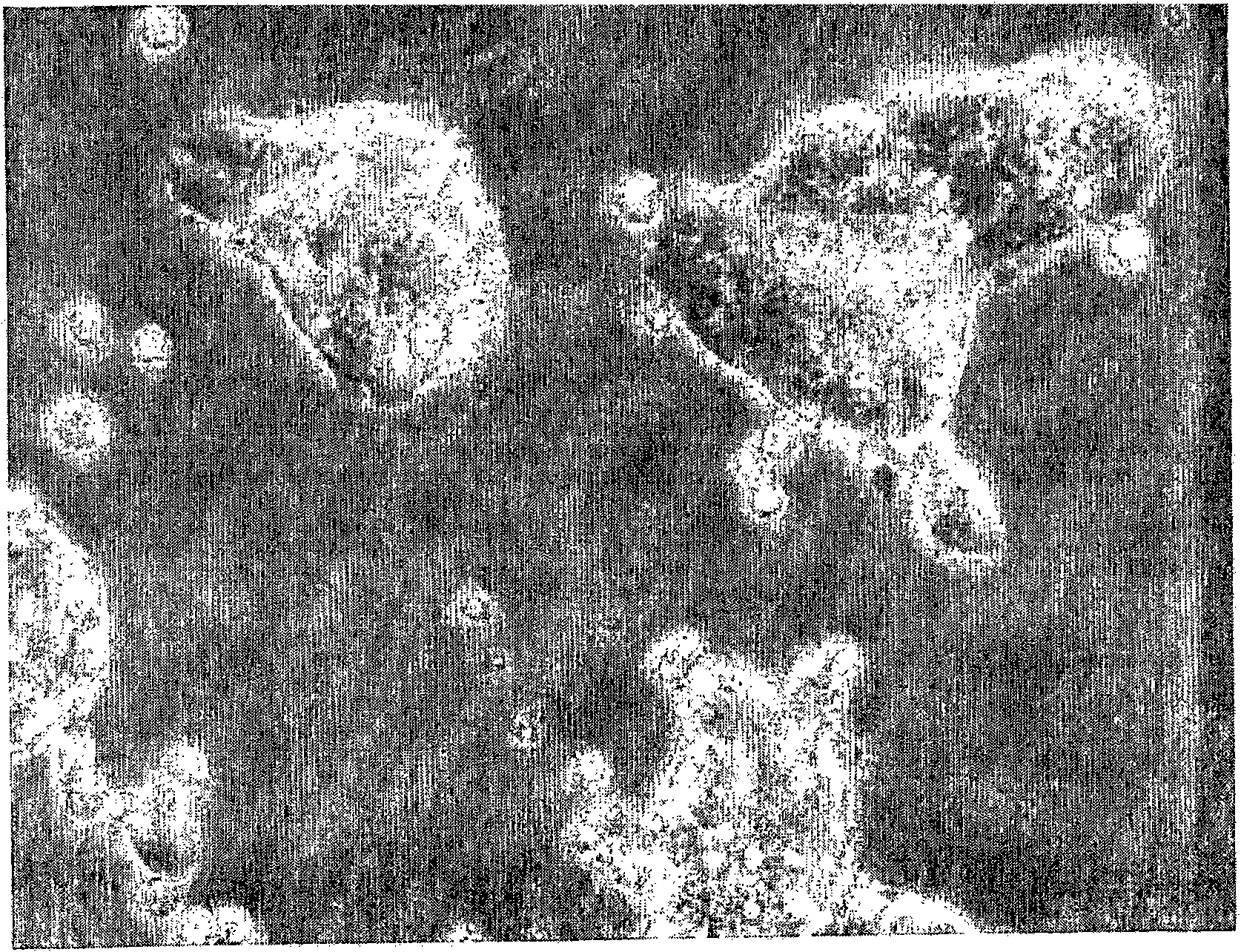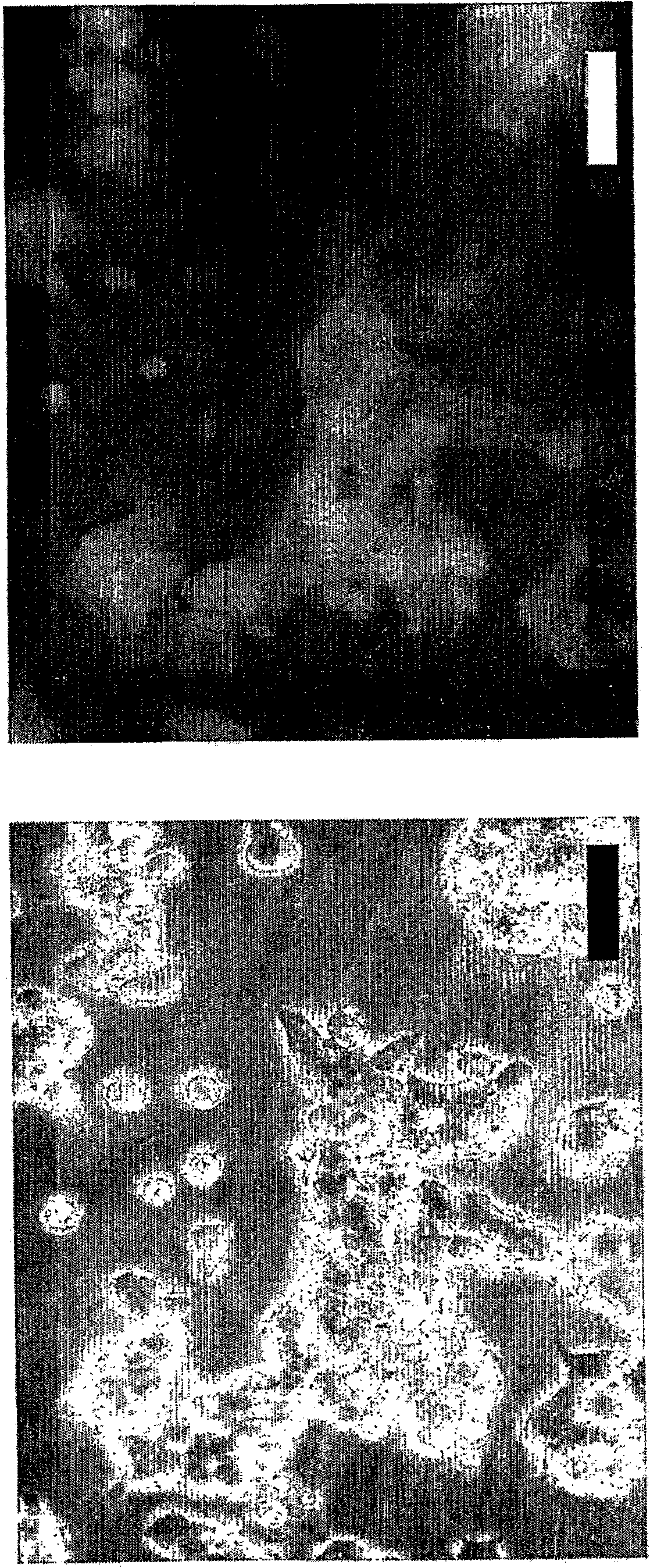Pluripotent cells from rat and other species
A pluripotent cell and cell technology, which is applied in the field of maintaining the self-renewal ability of pluripotent cells, and can solve problems such as difficulty in guaranteeing the purity of cytokines
- Summary
- Abstract
- Description
- Claims
- Application Information
AI Technical Summary
Problems solved by technology
Method used
Image
Examples
Embodiment 1
[0186] Mouse ES cells were cultured in a medium containing CHIR99021, PD184352 and SU5402, and the specific preparation steps were as follows:
[0187] The concentrations of the three inhibitors / antagonists were as follows:
[0188]
compound
The initial concentration
to dilute
After adding culture medium
The final concentration of
CHIR99021
10mM
Storeable at -20°C
more than 1 year
Divide the concentrate into 20 μl aliquots.
For the first time, dilute 10 times with N2B27 medium to
1mM. Store at 4°C. The above diluted solution
solution was added to the culture medium and diluted 333 times to the final concentration
The degree is 3 μM.
3μM
All cell lines are
Use this concentration.
PD184352
10mM
Storeable at -20°C
more than 1 year
The concentrate was divided into 10 μl aliquots.
Dilute 10...
Embodiment 2
[0200] Rat embryos of 4.5 dpc (E4.5) were taken, the zona pellucida was removed with acidic bench-top solution, and the trophectoderm was removed by immunosurgery. The inner cell mass was cultured in 4-well culture plates containing the following medium (3I medium), and a gamma-irradiated DIA-M feeder cell layer (see Buehr et al. 2003):
[0201] 3 μM Chiron 99021 (a GSK inhibitor)
[0202] 0.8 μM PD184352 (a MEK inhibitor)
[0203] 2 μM SU5402 (an FGF receptor antagonist)
[0204] In N2B27. Penicillin and streptomycin can be added if desired.
[0205] If desired, primary cultured mouse embryonic fibroblasts (MEFs) can be used instead of DIA-M cells as feeder cells.
[0206] After 3 days of continuous culture, small expansions were manually dissociated and the small cell clumps were transferred onto fresh DIA-M feeder cells in the same medium.
[0207] Continuously cultivate for 2 weeks, change the medium every 2-3 days and observe regularly. If small, well-defined coloni...
Embodiment 3
[0211] The cells of the rat 148C ES cell line were isolated by the method described in Example 2, and were prepared into teratomas by standard methods. Briefly, rat ES cells were infused under the renal capsule of immunodeficient SCID mice. Figure 10 shows a histological section of a teratoma thus obtained, in which a large tumor grew and sacrificed 33 days after injection.
[0212] Mature differentiated tissues, especially the epidermis, striated muscle, and intestinal epithelium, were clearly seen in the tissue sections. These tissues originate from the ectoderm, mesoderm, and endoderm, respectively. The tissue contains differentiated cells derived from each of the three primary germ layers indicating that rat 148C ES cells are pluripotent.
PUM
 Login to View More
Login to View More Abstract
Description
Claims
Application Information
 Login to View More
Login to View More - R&D
- Intellectual Property
- Life Sciences
- Materials
- Tech Scout
- Unparalleled Data Quality
- Higher Quality Content
- 60% Fewer Hallucinations
Browse by: Latest US Patents, China's latest patents, Technical Efficacy Thesaurus, Application Domain, Technology Topic, Popular Technical Reports.
© 2025 PatSnap. All rights reserved.Legal|Privacy policy|Modern Slavery Act Transparency Statement|Sitemap|About US| Contact US: help@patsnap.com



